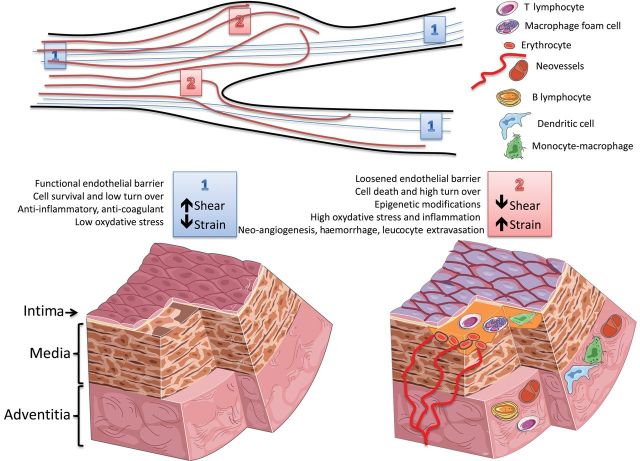Figure 3.
Effects of shear and strain on the arterial wall. (top) Schematic representation of different biomechanical forces along the arterial tree; 1 = laminar flow (blue lines) imposing a high shear stress parallel to the vascular wall and a low circumferential strain; 2 = arterial regions with a change in the diameter (lack of wall parallelism) and/or proximity to bifurcations (presence of disturbed flow, red line) are subjected to a relatively lower shear stress and higher strain. (bottom left) High shear stress and low strain (‘1’) contribute to maintenance of the physiological properties of the endothelial barrier (anti-coagulant, anti-inflammatory, and anti-oxidant properties) and of the vessel wall (homeostatic cell and matrix turn-over). (bottom right) Low shear and high strain (‘2’) cause endothelial cell death and reduce the physiological endothelial barrier function, thus favouring the formation of atherosclerotic plaques (yellow matter). Plaque progression can also be affected by biomechanical factors inducing an accelerated cell and matrix turn-over, modifications of the vascular stromal cells, inflammation, and intraplaque haemorrhage. This can boost plaque growth and in turn impact on the local flow dynamics, thus generating a vicious circle between biomechanical factors and atherosclerosis.

